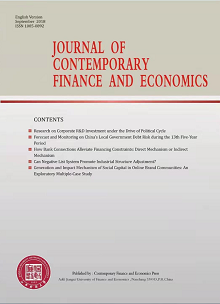|
|
Mobility and Solidification: Analysis on Intergenerational Transmission of Occupational Status in China
DING Ying, WANG Cuntong
2018, 0(1):
15-23.
The paper uses the data of CFPS 2010 to examine the direct effect of parents' occupational status on the occupation of their children. With regard to data processing, Bayesian multi-interpolation is adopted to fill in the dependent and independent variables for the missing values of the sampled data in order to obtain unbiased estimates of coefficients and standard errors. As for statistical model selection, ordinary least squares (OLS), instrumental variable method, and two-stage least squares (2SLS) method are applied to regional differences and direct effect of all factors, especially fathers' occupation, on that of children. In order to avoid estimation bias brought about by the sample selection, Heckman selection model is used to test the robustness of the estimation result of instrumental variable method and generalized method of moments (GMM). The study has found that those whose parents have high occupational status tend to enjoy the same status correspondingly, which procedurally shows the class solidification in China. Furthermore, through the Heckman selection model, fathers' occupational status has been found to have a significant influence on children's choice of occupation or on the development of their current career. In addition, this effect varies in different regions, evidenced by more developed economy or opener culture bringing the stronger influence of fathers' occupation. However, the educated level of individuals acts as a dominant part in affecting his or her occupational status.
References |
Related Articles |
Metrics
|

